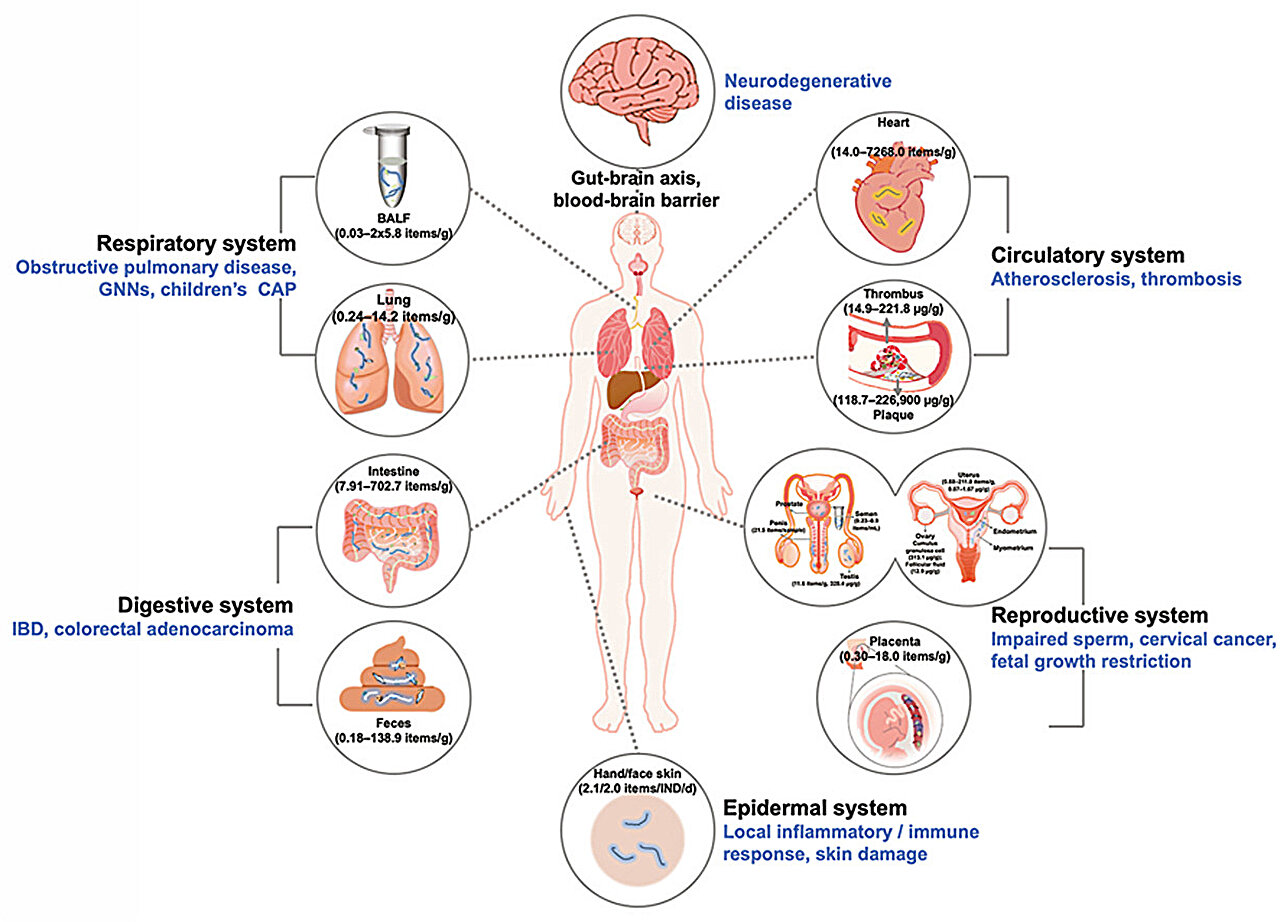Research led by Zhejiang Agriculture and Forestry University in China has performed a metadata investigation into the presence of microplastics in humans. They report a concerning relationship between micro and nanoplastic (MNP) concentrations in damaged tissues and links with multiple health conditions.
Plastic usage soared from 1.5 million metric tons in the 1950s to nearly 390.7 million in 2021. With the increased use in consumer products came elevated microscopic plastic pollution circulating in soil and waterways, eventually accumulating in the environment, food webs and human tissues.
Consistent methods to pinpoint and quantify MNPs in human tissues are lacking. Reliable data linking MNPs to human diseases are necessary for assessing potential risks and developing mitigation measures.
In the study, “Mapping micro(nano)plastics in various organ systems: Their emerging links to human diseases?” published in TrAC Trends in Analytical Chemistry, investigators collected 61 available research articles for MNP detection in human tissues, plus 840 articles on MNP toxicological mechanisms.
Data came from spectroscopy, microscopy, and pyrolysis-gas chromatography/mass spectrometry investigations to identify polymer types in different tissues. Toxicological studies employed cell models and animal experiments to examine oxidative stress, inflammatory responses, and related signaling pathways.
The studies documented particles detected in skin, arteries, veins, thrombi, bone marrow, testes, semen, uterus, and placenta. MNPs were found in the digestive system, from saliva to feces, liver, and gallstones.
Within the respiratory system, MNPs were everywhere, including lung tissue, with microscopic fibers common in bronchoalveolar lavage fluid and sputum.
Positive correlations emerged between particle abundance and specific disorders, such as inflammatory bowel disease, thrombosis, cervical cancer, and uterine fibroids.
Toxicological tests showed possible MNP-triggered oxidative stress, mitochondrial dysfunction, inflammatory responses, and apoptosis in various cell types, along with organ-level concerns like neurodegenerative disease onset when crossing the blood-brain barrier.
A critically important signal in the metadata discovered by the researchers was that measured levels of MNPs tended to be higher in tissues with lesions than in non-lesioned tissues. These included inflamed intestines, fibrotic lungs, or cancerous growths, suggesting a potential link between MNP buildup and local pathology.
There is an intriguing “what came first, the chicken or the egg” problem with lesions having higher concentrations of MNPs.
A quick author note: The chicken or egg problem has an obvious solution, as eggs predate chickens by hundreds of millions of years. Refining the question to “what came first, the chicken or the chicken’s egg” could infer that the first chicken emerged from the egg of a non-chicken fowl predecessor, but would require still further refinement as to whether “chicken’s egg” belongs to the fowl, the chicken within, or requires a chicken to lay it.
In the case of “what came first, the lesion or the microplastic,” it is possible that MNPs contribute to inflammation, oxidative stress, and cellular damage, which can cause or worsen tissue lesions. But it is also possible that these lesions accumulate more MNPs in already damaged tissue areas. While the current findings do not provide a direct cause-and-effect relationship, they offer good targets for further study.
There are no conventional methods for removing microplastics from the environment or human tissues. While efforts are underway to discover methods of environmental mitigation, developing such strategies to handle diverse particle sizes and chemistries of the particles embedded in living tissues presents an immense and potentially unattainable challenge.
More information:
Yating Luo et al, Mapping micro(nano)plastics in various organ systems: Their emerging links to human diseases?, TrAC Trends in Analytical Chemistry (2024). DOI: 10.1016/j.trac.2024.118114
© 2024 Science X Network
Citation:
Microplastics found in multiple human organ tissues correlated with lesions (2024, December 30)
retrieved 30 December 2024
from https://phys.org/news/2024-12-microplastics-multiple-human-tissues-lesions.html
This document is subject to copyright. Apart from any fair dealing for the purpose of private study or research, no
part may be reproduced without the written permission. The content is provided for information purposes only.


